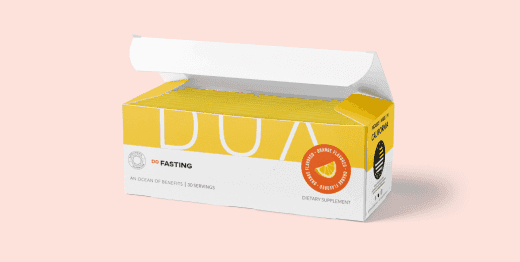Contents
Nutritional Content of Hummus
Hummus is a popular Middle Eastern dip made from chickpeas, tahini, lemon juice, and garlic. It can be used to create a variety of meals and as a dip or dressing.
The nutritional value of 3.5 ounces of hummus includes:
- Calories — 166
- Fat — 9.6 grams
- Protein — 7.9 grams
- Carbs — 14.3 grams
- Fiber — 6.0 grams
- Manganese — 39% of the RDI
- Copper — 26% of the RDI
- Folate — 21% of the RDI
- Magnesium — 18% of the RDI
- Phosphorus — 18% of the RDI
- Iron — 14% of the RDI
- Zinc — 12% of the RDI
- Thiamin — 12% of the RDI
- Vitamin B6 — 10% of the RDI
- Potassium — 7% of the RDI
The daily calorie intake for an adult typically ranges from 2000 to 2500 calories, though factors such as weight, height, sex, age, and activity level can influence this number. A 3.5-ounce serving of hummus contributes approximately 7% to 8% of this daily intake.
As a balanced snack option, hummus contains a moderate amount of calories, along with a good supply of protein and fiber—each 3.5-ounce serving provides 7.9 grams of plant-based protein and 6 grams of fiber. This high fiber content supports a healthy digestive system, helps prevent overeating, regulates blood sugar and cholesterol levels, and contributes to effective weight management.
In addition, hummus has a relatively moderate amount of fat and carbohydrates, further enhancing its nutritional benefits as a snack option.
The nutritional facts show that hummus is a good source of vitamins and minerals such as folate (about 21% of the recommended daily intake), iron, phosphorus, magnesium, and vitamin B6. These nutrients are all critical for proper body functioning and the immune system.
If you’re trying to lose weight or maintain your current weight, it’s important to track your caloric intake. You can do this by keeping a food diary or by using a calorie-tracking app like DoFasting. The DoFasting app is a user-friendly weight loss app that includes a water and step tracker to help you monitor your overall health and wellness.
Take a
1-minute quiz
and discover how much weight you can lose with DoFasting!

Benefits of Eating Hummus
It’s only natural that nutrient-packed dishes like hummus have various benefits for your health. Let’s discover all the advantages of adding this dip to your diet.
Low-calorie, high-protein snack
Snacks and treats that are both nutritious and low in calories, while also being high in protein, can support weight loss efforts and enhance metabolism. These types of foods offer a sense of satisfaction and fullness, helping to prevent overeating.
Protein consumption is known to suppress appetite, increase feelings of fullness, and provide a quick energy boost. It has also been shown to increase metabolism and influence changes in weight-regulating hormones.
Eating high-protein foods requires your body to expend more energy in digestion and absorption compared to high-fat or high-carbohydrate foods, resulting in a higher number of calories burned daily.
Furthermore, protein helps regulate blood sugar levels and prevent blood sugar spikes, reducing the risk of various metabolic disorders.
Lastly, protein is vital in maintaining muscle mass, further contributing to its overall health benefits.
Good source of healthy fats
Healthy fats, such as monounsaturated and polyunsaturated fats, offer numerous health benefits. A 3.5-ounce serving of hummus contains 9.6 grams of these beneficial fats.
Including an adequate amount of healthy fats in your diet is essential for the absorption of fat-soluble vitamins, such as A, D, E, and K. These vitamins play crucial roles in supporting the immune system, maintaining normal vision, and promoting bone health.
Additionally, hummus can contribute to improved heart health by lowering LDL cholesterol levels (“bad” cholesterol) and increasing HDL cholesterol levels (“good” cholesterol).
Finally, the presence of omega-3 fatty acids in hummus helps to reduce chronic inflammation within the body and enhance brain function.
High in dietary fiber for digestive health
Hummus is rich in dietary fiber, providing 24% of the recommended daily intake for women and 16% for men, as indicated by the nutrition facts table.
Dietary fiber is a carbohydrate that remains largely undigested as it passes through the digestive system, playing a crucial role in maintaining digestive health.
Adequate fiber intake helps regulate bowel movements and supports overall bowel health. Moreover, it contributes to a balanced population of healthy gut bacteria. These bacteria ferment fiber, producing short-chain fatty acids that aid in managing inflammation and supporting immune function.
Scientific research has shown that incorporating 200 grams of chickpeas into one’s diet for three weeks can promote the growth of beneficial gut bacteria while inhibiting the proliferation of harmful bacteria.
Good for heart health
Heart health is crucial, as heart disease remains the leading cause of death in the United States.
Regular consumption of hummus can support heart health for several reasons. Firstly, hummus is abundant in antioxidants like flavonoids, phenolic compounds, and vitamin E, which protect the body from the damaging effects of free radicals.
Furthermore, a study involving 47 healthy adults found that those who consumed extra chickpeas experienced a 4.6% reduction in LDL cholesterol levels. Excessive LDL cholesterol in the bloodstream can cause deposits to form in the walls of the coronary arteries, restricting blood flow and increasing the risk of heart attack or stroke.
Hummus is also low in saturated fat and rich in fiber, contributing to maintaining a healthy heart.
Low in added sugars
Foods high in added sugars can lead to blood sugar spikes after consumption, making them unsuitable for individuals with diabetes and problematic for diabetes prevention.
Hummus, typically made from chickpeas, olive oil, lemon, garlic, and tahini (ground sesame seeds), contains minimal sugar
Moreover, chickpeas are a complex carbohydrate that digests more slowly than simple carbohydrates. As a result, they release glucose into the bloodstream at a steadier, more consistent rate, helping to maintain stable blood sugar levels.
Complex carbohydrates not only take longer to digest but also provide a more sustained energy source compared to simple carbohydrates.
Low-sugar foods like hummus can contribute to weight management and be included as part of a well-balanced diet.
Take a
1-minute quiz
and discover how much weight you can lose with DoFasting!

Comparison of Hummus With Other Spreads and Dips
Let’s now take a look at other popular spreads and dips and how they compare to hummus.
Hummus vs. mayonnaise
Mayonnaise, originating from French cuisine, is an emulsion made primarily of raw egg yolks and vegetable oil, with occasional additions of other flavorings or stabilizers
3.5 ounces of mayonnaise contain:
- Calories — 680
- Fat — 75 grams
- Protein — 1 gram
- Carbs — 0.6 grams
- Fiber — 0 grams
Mayonnaise is notably high in calories and saturated and trans fats, which are associated with an increased risk of cardiovascular disease. In contrast, hummus is low in calories, with 3.5 ounces containing only 166 calories, and is lower in fatty content while being rich in protein and fiber.
While hummus is linked to various health benefits, mayonnaise lacks these advantages and can be considered a less nutritious option.
Hummus vs. ranch dressing
Ranch dressing, which originated in America, is typically composed of buttermilk, salt, garlic, onion, mustard, herbs, and spices, combined to form a sauce based on mayonnaise or another oil emulsion.
3.5 ounces of ranch dressing contain:
- Calories — 451
- Fat — 45 grams
- Protein — 1.4 gram
- Carbs — 6 grams
- Fiber — 0 grams
Like mayonnaise, ranch dressing is high in calories and fat, whereas hummus is richer in fiber and protein, and has lower levels of calories, fat, and sodium. Hummus is made from healthy ingredients such as chickpeas, which offer a variety of health benefits due to their fiber, protein, and healthy fat content.
These benefits range from supporting the digestive system to reducing inflammation in the body.
Ranch dressing, on the other hand, does not provide any of these advantages. It is lacking in essential vitamins and minerals and can be considered less nutritious in terms of health. Furthermore, its high fat and sodium content can contribute to heart problems and other health issues.
Hummus vs. guacamole
Guacamole, which originated in Mexico, is prepared with mashed avocado, lime juice, salt, and cilantro and may also include ingredients like tomatoes and onions in some variations.
3.5 ounces of guacamole contain:
- Calories — 157
- Fat — 14 grams
- Protein — 1.9 gram
- Carbs — 9.1 grams
- Fiber — 6.3 grams
Now, we have come to a dip that can rival hummus in terms of nutrition. Both spreads offer similar nutritional profiles, containing unsaturated fats, fiber, vitamins, and minerals that contribute to overall health and well-being.
However, guacamole is generally higher in sodium compared to hummus.
Nevertheless, when enjoyed in moderation, both dips are great options for maintaining a healthy, balanced diet.
How To Incorporate Hummus Into a Healthy Diet
Here are some tips that will help you include this delicious and versatile dish in your diet:
- Prepare hummus yourself — homemade hummus is guaranteed to be natural and well-balanced. Besides, it only contains healthy ingredients and is relatively easy to make.
- Use as a dip — hummus can be a delicious, low-calorie dip for vegetables, pita bread, or crackers.
- Incorporate it into your meals — use it as a salad dressing, on toast or sandwiches, as a topping for roasted vegetables, or grilled chicken.
- Keep hummus on hand — so it will always be ready when you need a quick, healthy snack.
How to prepare your own hummus at home:
Ingredients:
- Chickpeas
- Garlic
- Tahini
- Fresh lemon (juiced)
- Salt
- Extra virgin olive oil
- Garnish
Instructions:
- Soak and cook the chickpeas.
- Peel the chickpeas and blend them in a food processor with tahini, salt, and lemon juice.
- Transfer to a serving bowl and add a generous drizzle of olive oil.
Healthy Weight Loss Recipes With Hummus
Here are a few healthy recipes that include hummus from the DoFasting app:
Avocado hummus snack
Nutritional value:
- Energy — 219
- Fat — 11.5 g
- Carbs — 26.2 g
- Protein — 5.4 g
Ingredients:
- Cucumber — 1 small
- Carrot — 1 small
- Avocado — 1/2 large
- Chickpeas, canned — 3 tbsp
- Lime juice — 1 tbsp
- Garlic — 1 clove, minced
- Cilantro, fresh
- Chili flakes
Instructions:
- Mash together the avocado, drained canned chickpeas, minced garlic, chili flakes (optional), and lime juice.
- Top the hummus with the cilantro leaves and serve with the sliced carrot and sliced cucumber.
Vegetable and hummus salad
Nutritional value:
- Energy — 442 kcal
- Fat — 26.6 g
- Carbs — 37.2 g
- Protein — 13.9 g
Ingredients:
- Beet, cooked — 2 medium, chopped
- Carrot — 1 small, chopped
- Chickpeas, canned — 1/3 cup
- Hummus — 1 tbsp
- Feta cheese — 3 tbsp, crumbled
- Arugula leaves — 1 cup
- Olive oil — 1 tbsp
- Mint, fresh — 1 tbsp, chopped
- Cumin seeds — 1 tsp
Instructions:
- Heat the oven to 390°F/200°C. Place chickpeas and carrots in a baking dish, drizzle with olive oil, and bake in the preheated oven for 15 min.
- Add beetroot to the same baking dish and cook in the oven for 5 min more.
- Spread the hummus thinly over a plate.
- Add the vegetables and chickpeas on top of the hummus, and scatter over mint, arugula leaves, and cheese. Top with cumin seeds.
For more meal ideas, visit the meal tab in the DoFasting app, enter any ingredient of your choice, and explore over 5000 healthy and easy-to-prepare recipes.
Take a
1-minute quiz
and discover how much weight you can lose with DoFasting!

Key Takeaways
Hummus, made from chickpeas and tahini, is a versatile option that can be used as a spread, dip, dressing, or filling in a range of meals. It is a nutritious snack, offering various health benefits and aiding in weight loss or maintaining a healthy weight.
See how DoFasting will improve your life
Find out what works for you with this 60-sec quiz approved by our experts and get your personal revolutionary fasting assistant.
Start the Quiz
This is an evidence-based article that includes scientific citations. DoFasting’s professional writers and editors prepared the content, which a team of medical experts verified to be accurate.













